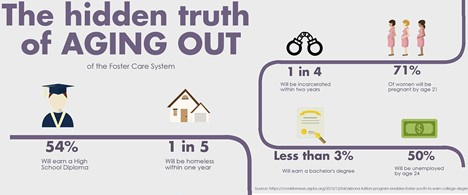Jacob Transition Safe House Understands:
· Homelessness prevention in emerging adulthood raises important policy and practice issues for the child welfare system.
· National data compare rates of homelessness in emerging adulthood among adolescents involved in the child welfare system.
· Aging out youth experience inadequate housing at similar rates as other child welfare-involved adolescents.
· Adolescents who reunify with parents after out-of-home placement experience lower rates of literal homelessness.
· Findings emphasize the developmental importance of families in promoting housing stability in the transition to adulthood.
Jacob Safe House Understand from Studies:
For many minors, turning 18 is an exciting milestone. Around this age, there tend to be high school graduations, celebrations with family, preparations for college, registering to vote and gaining a new sense of independence as an adult. For a large majority of youth in foster care, turning 18 means aging out of the system.

They will need to find a place to live, food to eat, an income that can accommodate their cost of living, a bank account, perhaps a driver’s license, and car, some may still need to graduate high school, others plan for college, obtain medical and dental insurance, and all of the other things it takes to be self-supporting. At 18 years old, there are few who are ready to go out into the world alone, with no support and no place to call home and no family, but for many 18-year-olds aging out of the foster care system, they have no choice but to be ready. (Source: Child Crisis Arizona